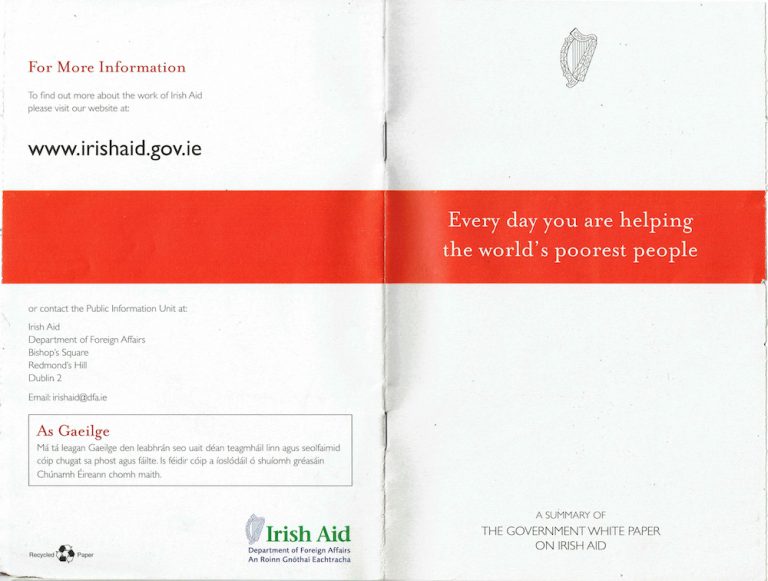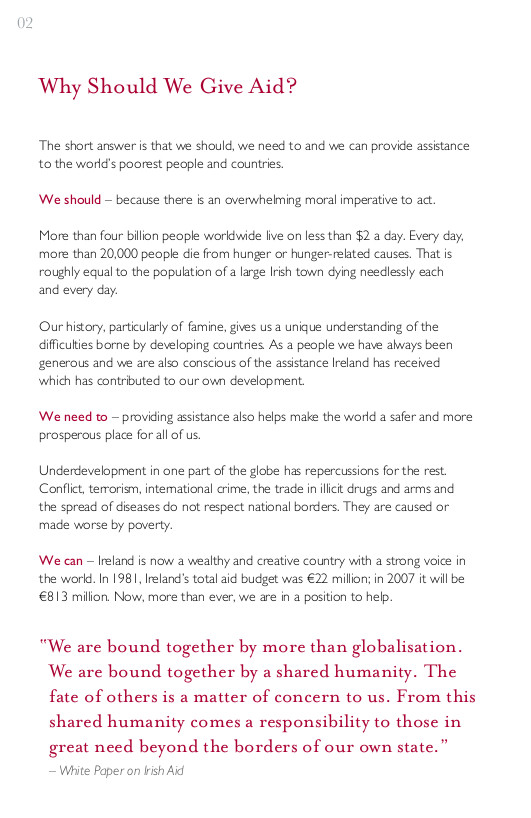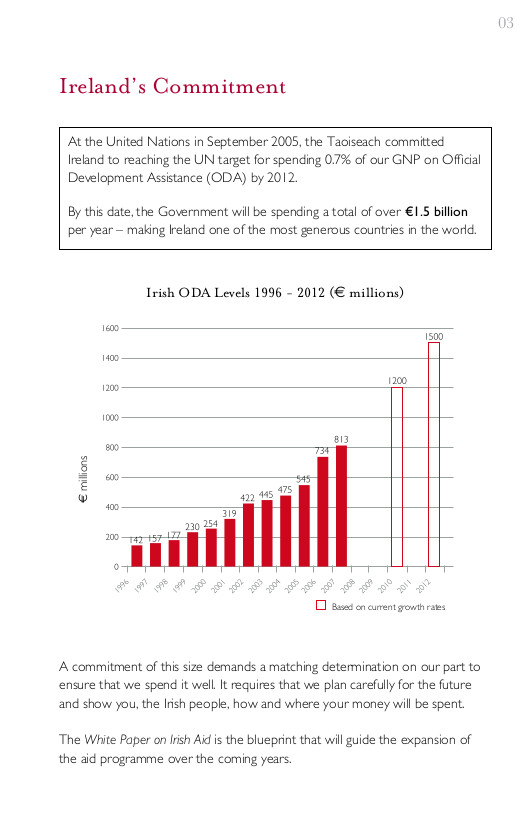“It is an affront to our common humanity, five years after the Millennium Summit, that 30,000 children die each day from easily preventable diseases, or that 100 million people go to bed hungry, or that 100 million children are not receiving a basic education. Speaking to the United Nations General Assembly in September 2005, I set out the challenges that face us today. Because of our history, Ireland can rightly claim to empathise with those who are suffering from disease, poverty and hunger every day around the globe. But empathy is not enough. Our actions must speak louder than our words.”
Setting out Ireland’s most ambitious road map in the fight against global poverty since the aid programme began in 1974, the White Paper includes a rationale on ‘why should we give aid?’ and (for the first time) and targets towards increasing official development assistance to reach the UN target of 0.7 percent of Irish gross national product (GNP).




